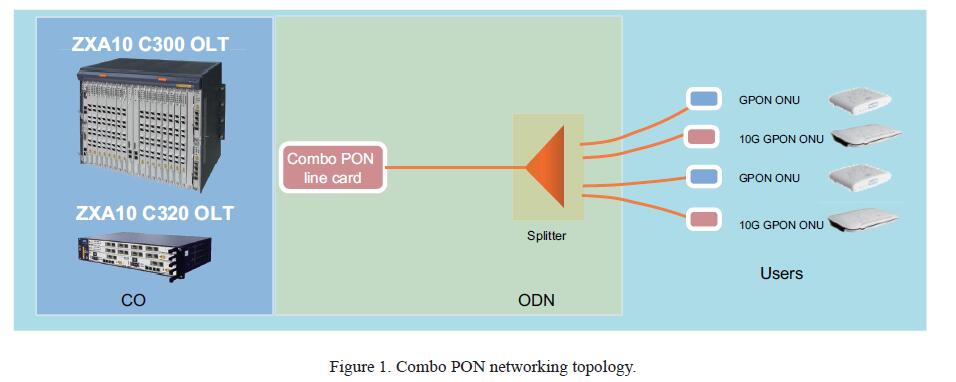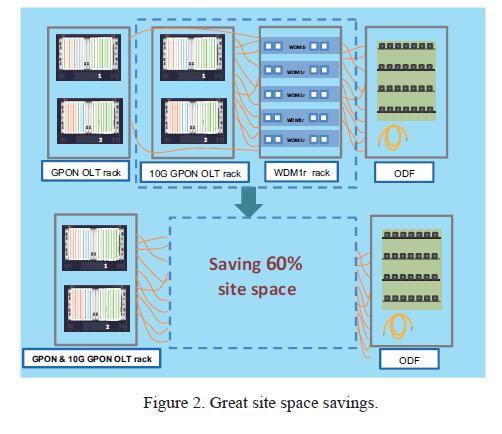Cost-Effective Combo PON for Bandwidth Increase and Value Creation
High-bandwidth services including 4KTV, 3D gaming, HD video, live interaction, virtual reality (VR) and augmented reality (AR) have been flourishing in recent years. Faced with fierce competition and driven by national broadband policies, operators are accelerating broadband network deployments. The prevailing GPON is increasingly unable to meet the bandwidth demand of ever-growing high-bandwidth services. To enhance user experience and create new value, operators need new technologies that deliver higher bandwidth and better services. When upgrading GPON to 10G GPON, they have to consider issues concerning resource reuse, fast deployment, and forward and backward compatibility.
The field-proven 10G GPON can meet operator needs by providing high bandwidth to enable service growth. Most operators have begun to develop solutions for upgrading GPON to 10G GPON in a low-cost, flexible and fast manner.
Two solutions are available: the external WDM1r solution that uses external wavelength division multiplexing filters and the Combo PON solution that has integrated optical modules. The external WDM1r solution requires additional accessories including OLT frames, racks, 10G GPON line cards, external WDM1rs, patch cords, and ODFs. This results in high construction costs, requires excessive floor space, and causes difficulty for the operation and maintenance of fiber optic cabling. Moreover, optical power loss introduced by external WDM1rs affects the optical power budget of in-service ONUs and thus may adversely impact user experience. However, the Combo PON solution with integrated optical modules combines GPON and 10G GPON wavelengths into dual-channels within one optical module before outputting them through one optical port. To evolve into 10G GPON, operators only need to use Combo PON cards to replace their original GPON cards on the OLT. GPON and 10G GPON can coexist when fibers on the GPON cards are cut over onto the Combo PON cards. Existing ODN and related equipment frames can be reused without adding accessories such as OLT frames and external WDM1rs. Compared with the external WDM1r solution, the Combo PON solution saves floor space and capital investment, makes it easy to upgrade and maintain networks, and supports fast service provisioning without impact on existing services.
Combo PON is a combination of GPON and 10G GPON. GPON and 10G GPON wavelengths are combined in one optical module, and the two optical signals are separately sent and received. The Combo PON solution is compatible with existing GPON services and also provides necessary high-bandwidth services. The existing network devices and ODN are reused. This avoids changing network resources and occupying additional floor space. User-side ONUs can be replaced as required for a fast, smooth upgrade to high-bandwidth services.
The Combo PON line card supports Combo PON optical module. An operator can upgrade its network to 10G GPON and fast deploy high-bandwidth 10G GPON services by using Combo PON line cards to replace the line cards on GPON OLT (Fig.1).The Combo PON solution enables a smooth migration to high-bandwidth services simply by replacing line cards. It has distinct advantages over the external WDM1r solution.

● Great site space savings and simple O&M: The Combo PON solution does not require additional external devices and accessories. When GPON is fully configured and upgraded, the solution can greatly save floor space. For a GPON rack that is fully loaded with two GPON OLT frames and is upgraded to 10G GPON, the solution saves more than 60% site space (Fig.2). Moreover, no additional devices are needed. This simplifies O&M and brings capex and opex savings.

● Balancing the return on investment: Currently, 10G GPON ONUs cost much higher than GPON ONUs. With the Combo PON solution, operators can upgrade ONUs in user homes as needed. This enables an asset-light upgrade to 10G GPON, avoids high investment by directly using 10G GPON ONUs, and rapidly balances the return on investment.
● Smooth network evolution: Widespread deployment of GPON services has led to a tight optical power budget for some regions and users. The external WDM1r solution introduces at least 1.5 dB insertion loss, which may make existing GPON ONUs unable to work properly and thus affect the existing services. The Combo PON solution combines GPON and 10G GPON wavelengths and amplifies their optical power within the optical module to compensate for optical power loss caused by the wavelength combination and keeps their optical power budget unchanged. This ensures that existing services are not affected.
ZTE has been committed to the innovation of products and solutions to create customer value. Its Combo PON solution can solve problems concerning high upgrade costs, much floor space, complex fiber optic cabling, and O&M difficulties during the evolution from GPON to 10G GPON. The solution has become a preferred choice for operators. They can use the solution to fast and flexibly deliver high-bandwidth services, improve user experience, increase their competitiveness, and thus achieve sustainable profit growth.